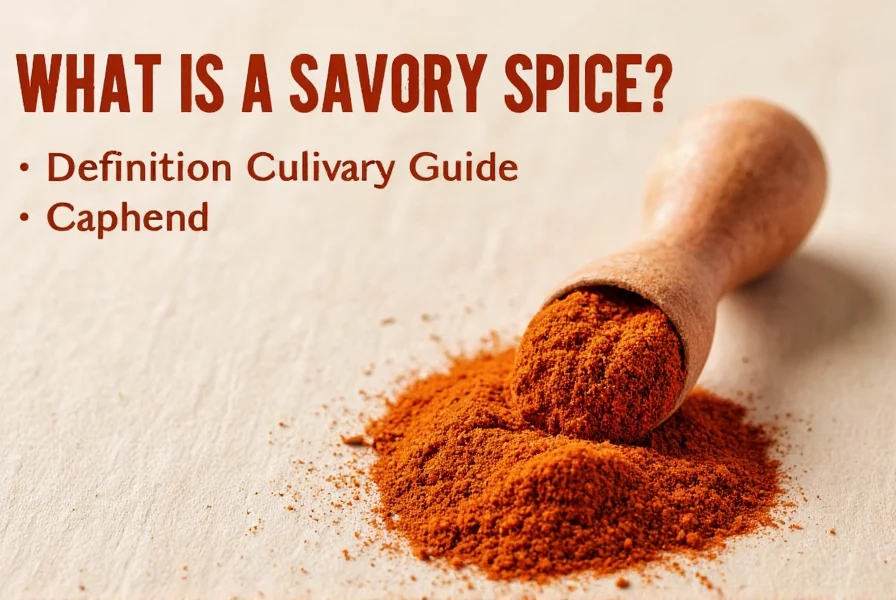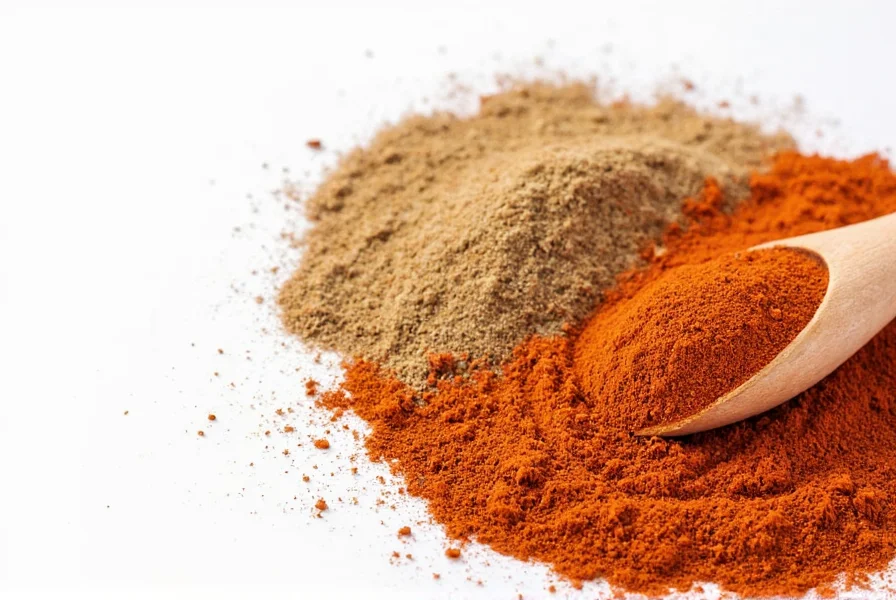Savory spices form the backbone of countless culinary traditions worldwide, providing depth and complexity that transforms simple ingredients into memorable dishes. Understanding what makes a spice 'savory' goes beyond just identifying examples—it involves recognizing how these spices interact with our taste receptors and complement other ingredients in cooking.
The Science Behind Savory Flavors
When exploring what is a savory spice, we must consider the fifth basic taste: umami. While sweet, sour, salty, and bitter represent the other four primary tastes, umami describes that rich, meaty, satisfying flavor associated with protein-rich foods and certain spices. Savory spices often contain glutamates and nucleotides that trigger umami receptors, creating that deep, satisfying taste profile.
Unlike sweet spices that primarily activate sugar receptors, savory spices work synergistically with salt to enhance overall flavor perception without adding sweetness. This makes them indispensable in main courses, sauces, and dishes where a balanced, complex flavor profile is desired.
Common Savory Spices and Their Characteristics
Understanding what is a savory spice requires examining specific examples and their unique properties. Here's a comparison of popular savory spices:
| Spice | Flavor Profile | Best Culinary Uses | Substitution Options |
|---|---|---|---|
| Garlic Powder | Pungent, earthy, slightly sweet | Meat rubs, sauces, roasted vegetables | Fresh garlic (6:1 ratio) |
| Onion Powder | Sweet-sharp, aromatic | Gravies, soups, marinades | Fresh onion (4:1 ratio) |
| Black Pepper | Sharp, pungent, slightly floral | Finishing dishes, meat preparations | White pepper (milder) |
| Paprika | Earthy, slightly sweet to smoky | Stews, rubs, deviled eggs | Chipotle powder (spicier) |
| Cumin | Earthy, warm, slightly bitter | Tacos, chili, Middle Eastern dishes | Coriander (milder) |
Distinguishing Savory from Sweet Spices
One of the most common points of confusion when learning what is a savory spice involves distinguishing them from sweet spices. The difference isn't always obvious—some spices like cinnamon can work in both sweet and savory applications depending on the cuisine.
The key distinction lies in their primary flavor compounds and traditional culinary applications:
- Savory spices typically feature earthy, pungent, or herbal notes that complement proteins and vegetables
- Sweet spices generally contain higher concentrations of vanillin, eugenol, or other compounds that activate sweet receptors
Consider this practical test: if a spice works well in a beef stew but would seem out of place in a chocolate cake, it's likely savory. Conversely, if it enhances both apple pie and mulled wine, it's probably a sweet spice.

Global Applications of Savory Spices
Exploring what is a savory spice reveals fascinating cultural variations. Different culinary traditions have developed unique approaches to savory flavor profiles:
- Mediterranean cuisine relies on garlic, oregano, and rosemary for savory depth
- Asian cooking often uses five-spice powder components like star anise and Szechuan pepper
- Middle Eastern dishes feature cumin, coriander, and sumac for complex savory notes
- Mexican recipes build flavor with chili powders, cumin, and epazote
Understanding these regional differences helps home cooks authentically recreate global dishes while appreciating what makes a spice 'savory' within specific culinary contexts.
Practical Tips for Using Savory Spices
Mastering savory spices requires more than just knowing what is a savory spice—it involves understanding how to use them effectively:
- Bloom spices in oil to release maximum flavor compounds before adding other ingredients
- Add early for depth, but finish with fresh herbs for brightness in complex dishes
- Balance with acid—a splash of vinegar or citrus can enhance savory spice profiles
- Store properly in airtight containers away from light to maintain potency
- Toast whole spices before grinding for more complex flavor development

Common Misconceptions About Savory Spices
Several myths persist about what constitutes a savory spice. Let's clarify:
- Myth: All spicy/hot peppers are savory spices
Reality: While many chili peppers work in savory applications, their primary characteristic is heat rather than savory depth - Myth: Savory spices can't be used in vegetarian cooking
Reality: Savory spices actually help create meat-like depth in plant-based dishes through umami enhancement - Myth: Salt is a savory spice
Reality: Salt enhances savory flavors but isn't classified as a spice—it's a mineral
Understanding these distinctions helps cooks make more informed decisions when exploring what is a savory spice and how to use these flavor enhancers effectively.
Building Flavor Profiles with Savory Spices
Professional chefs understand that what makes a spice 'savory' isn't isolated—it's about how these spices interact in layered flavor profiles. Consider these complementary pairings:
- Garlic + onion + thyme = classic French mirepoix foundation
- Cumin + coriander + smoked paprika = Southwest/Mexican flavor base
- Ginger + garlic + star anise = Asian aromatic foundation
- Rosemary + sage + black pepper = rustic European profile
When creating dishes, think about building from these foundational savory spice combinations rather than using single spices in isolation. This approach creates the complex, satisfying flavors that define exceptional cooking.
Frequently Asked Questions
What's the difference between savory spices and herbs?
Savory spices typically come from seeds, roots, bark, or fruits of plants and have concentrated flavor compounds, while herbs are the leafy parts of plants. Spices generally have stronger, more complex flavors that withstand longer cooking times, making them ideal for creating deep savory profiles in dishes that require extended preparation.
Can sweet spices ever be used in savory dishes?
Yes, many sweet spices work beautifully in savory applications when used judiciously. Cinnamon appears in Moroccan tagines, allspice enhances Jamaican jerk seasoning, and nutmeg complements béchamel sauce. The key is understanding flavor balance—small amounts of sweet spices can add complexity to savory dishes without making them taste sweet.
How can I tell if my savory spices have gone bad?
Fresh savory spices should have vibrant color and strong aroma. If your spices have lost their scent after rubbing a small amount between your palms, or if they've significantly faded in color, they've likely lost potency. Ground spices typically remain potent for 6-12 months, while whole spices can last 2-4 years when stored properly in airtight containers away from light and heat.
Are there any savory spices that provide health benefits?
Many savory spices offer notable health benefits. Turmeric contains curcumin with anti-inflammatory properties, garlic supports cardiovascular health, and black pepper enhances nutrient absorption. Cumin aids digestion, while cinnamon (used in savory applications) helps regulate blood sugar. Incorporating a variety of savory spices not only enhances flavor but also contributes valuable phytonutrients to your diet.










 浙公网安备
33010002000092号
浙公网安备
33010002000092号 浙B2-20120091-4
浙B2-20120091-4